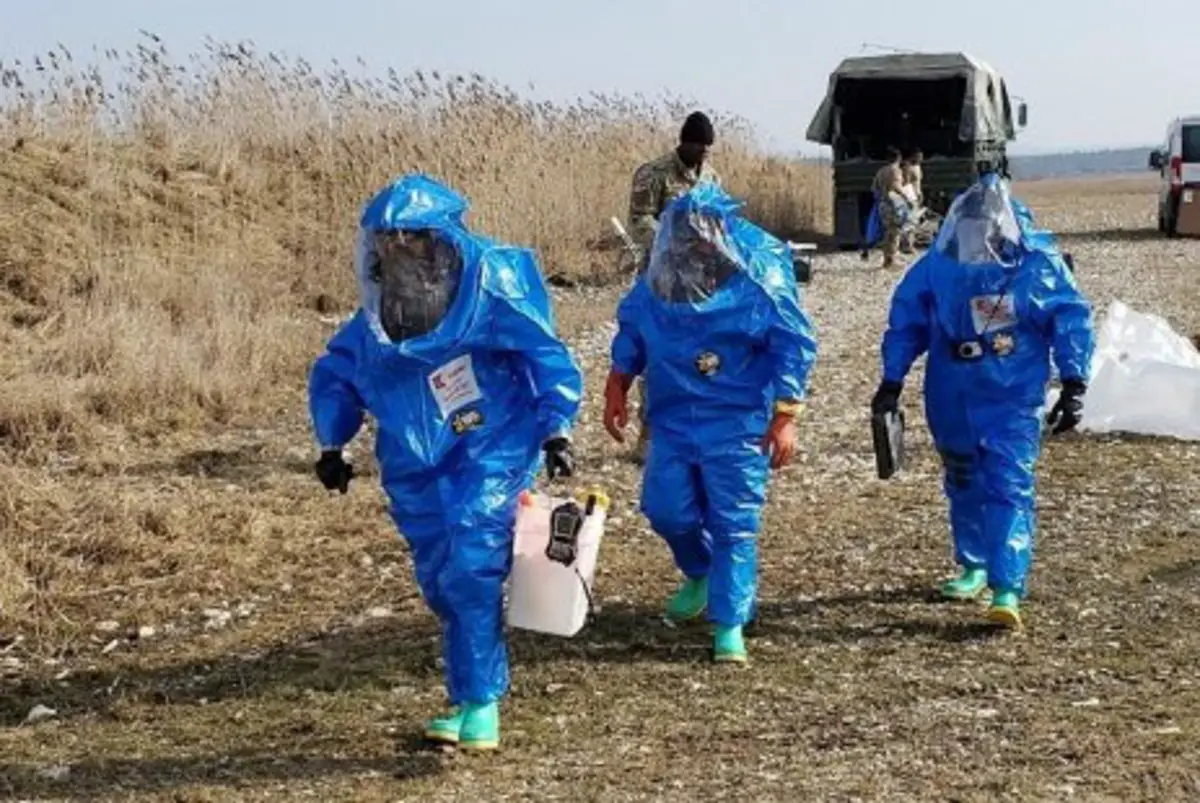Hazmat is the short acronym for “hazardous materials”. So a Hazmat suit is a Hazardous Materials Suit.
A hazmat suit is a type of PPE – Personal Protective Equipment which is used by medics, doctors, disaster cleaners, nuclear inspectors, firefighters, drug enforcement, soldiers and many other professionals.
A hazmat suit is full-body protective gear that provides the wearer protection from dangerous and hazardous materials. These hazardous materials could be biological waste, chemicals, gases, radiation or biological agents such as viruses and bacteria.
Hazmat suits are worn with other PPE such as gloves, goggles, boots, SCBA breathers, gowns, etc. These components must work together to ensure the wearer is fully protected against known and unknown substances.
If you’re in the market to purchase a hazmat suit we also recommend reading our Essential Hazmat Suit Buying Guide.
How Do Hazmat Suits Work?
These suits are designed in such a way that foreign substances are prevented from coming into contact with the wearer. The suit itself creates an impermeable barrier against gases, liquid, radiation or biological agents.

Some hazmat suits have an additional protection in the form of forced air, which creates a positive pressure inside-out air flow. This prevents gases, powders or microbes from entering the suit, even if it is damaged.
Hazmat Suit Performance Levels
In the U.S., these Hazmat suits are classified into four levels based on the protection they provide – Level A, B, C, and D.
Level A suits provide the highest level of protection from all kinds of vapors, particles, gases, and mist. This type of suit is fully sealed. It comes with a respiratory apparatus known as SCBA and a two-way radio. Level A suits are worn in the most dangerous situations, including environments contaminated with deadly radiation and chemical weapons.
Level B suits provide the next best level of protection including splash protection and chemical resistance. The suit includes gloves and boots with Level A protection from liquids. However, Level B suits are not airtight. These hazmat suits are used when breathing and chemical protection is required, but full isolation is not required.
Level C suits resemble Level B garments but allow some other respiratory protection such as purifying respirators. This typs of hazmat suit is used by medics, doctors and health professionals who treat highly infectious patients such as ebola victims. They are also used to decontaminate crime scenes, treat mold infestations, investigate fire scenes, and other uses where dangerous substances can be inhaled.
Level D hazmat suits do not provide significant chemical or gas protection. They are designed to keep common hazardous substances off the wearer.
How Should Hazmat Suits Be Worn?
The complete sequence of donning, taking off and disposing of a hazmat suit is discussed in this article on how to use a hazmat suit.
Depending on the level of protection, hazmat suits can take from 1 minute to 30 minutes to put on. Level A, B and C suits typically require a second well-trained person to help the wearer into the suit and seal it correctly.
Hazmat suits can be worn over normal clothing or insulated garments to protect against heat, cold or radiation. If the suit is to be worn for long periods or in high heat, a self-cooling jacket or vest may be worn under the suit.
Once the undergarments are on, the wearer then puts on the remaining PPE suit components such as gloves, shoes, hoods, sleeves, face masks, etc. The suit is secured from contamination at the waist, wrists, ankles, neck, and face.
Special care needs to be taken when removing Hazmat suits. Since the outside is contaminated, the suit should always be removed by rolling forwards and downwards starting from head to toe. The SCBA is removed last.
Hazmat suits should only be removed in an isolation area that prevents spreading the contamination. All PPE must be removed before leaving the isolation area.
Different health facilities and organizations have different protocols for different jobs using Hazmat suits so these guidelines for use will vary.
Looking for a Coronavirus hazmat suit and accessories? Click here > |
Hazmat Suit Compliance
All hazardout materials suits need to be compliant with the guidelines laid down by the Center for Disease Control (CDC) and/or the National Fire Protection Association (NFPA).
Sources:
https://ohsonline.com/Articles/2015/03/01/Hazmat-Protection-from-Head-to-Toe.aspx?Page=3
UP NEXT: 15 Jobs That Require HAZMAT Suits
